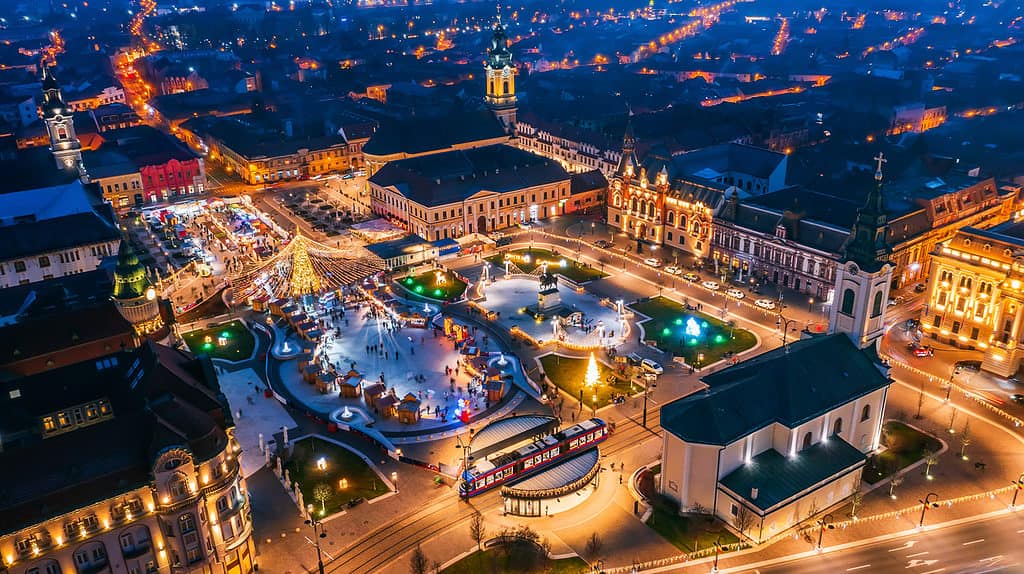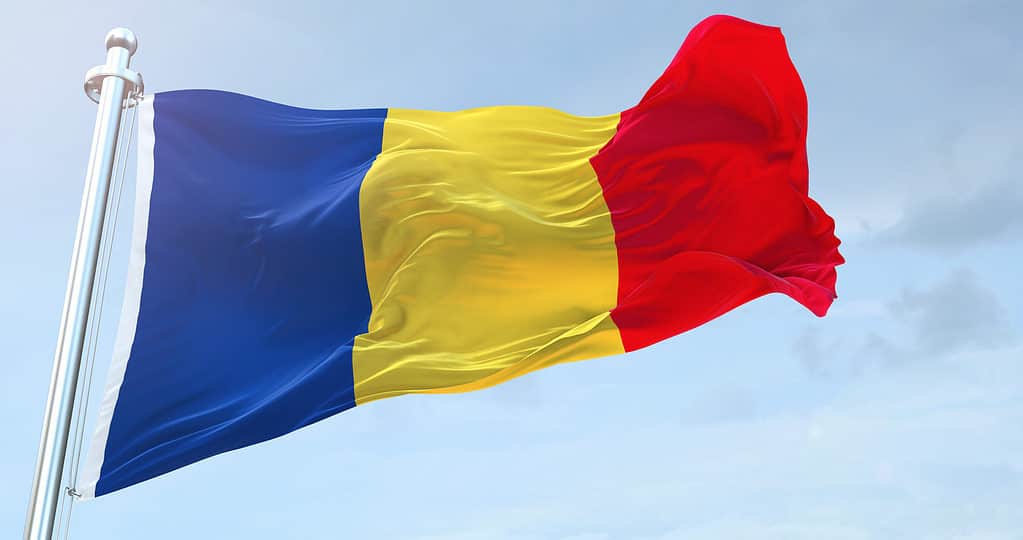Located in Europe, Romania is a country located in the southeastern part of the continent. Hungary borders the nation to the west, Bulgaria borders it to the south, Ukraine to the north, and Moldova to the east. Despite being a developing country, Romania still has an interesting high-income economy. The country marked a period of rapid economic growth in the 2000s, with its economy focused primarily on services, making it the world’s 47th largest economy by nominal GDP.
Romania is also home to deep histories and countless archeological artifacts, with evidence showing proof of life in the region from thousands of years ago. Currently, most of the country’s population belongs to several ethnic groups, with Romanian as their primary language.
The purpose of this article is to describe the history and significance of the Romanian flag. However, knowledge of the country’s history is necessary to comprehend the decision for the country’s flag. Let’s go!
Characteristics of Romania

Romania gained independence in 1877.
©iStock.com/emicristea
Romania is a relatively populated country. The country has over 19 million inhabitants spread over 238,397 square kilometers (92,046 square miles), making it the 12th-largest country in Europe. Since the country is equally divided into mountains, plains, hills, and plateaus, it is recognized as having an almost perfect geographical scenery. It takes up the majority of the lower basin of the Danube River system and the steep eastern sections of the middle Danube Basin. The country also borders the Black Sea to the southeast and, as a result, shares a naval border with Turkey.
The area that is currently Romania dates as far back as the Lower Paleolithic period, with evidence of the Kingdom of Dacia before its conquest by the Roman Empire. However, the modern Romanian state was not formed until 1859. They officially became Romania in 1866 and got their independence in 1877. Romania is a semi-presidential republic with a head of state (the President) and a head of government (the prime minister). Both the government and the President carry out executive duties. The Senate and the Chamber of Deputies make up the bicameral parliament of Romania. The Supreme Court of Justice oversees the legal system and consists of members chosen by the President for a six-year tenure.
One of the fascinating things about the country is that each geographic region has its own culture. Apart from this ever-present culture, the lives of the citizens are also primarily guided by religious traditions. A significantly large portion of the country’s population is ethnically Romanian, but other ethnically Hungarian citizens reside in the country’s northwestern area. Other ethnic groups in the country include Gypsies and Germans, which make up a smaller percentage of the populace, especially Germans, whose numbers reduced drastically in the country following the second world war. Romanian is the country’s official language, and Hungarian is the only other popular language spoken by over a million people in the country. Other minor languages include German, Serbian, and Turkish. Also, many of the country’s inhabitants are Christians, particularly faithful to the Romanian Orthodox Church. However, some other inhabitants of the nation identify as Protestants.
Founding of Romania
Around 8,000 BC, stone age hunters were the earliest inhabitants of Romania. These early dwellers eventually learned to farm and make bronze tools and use iron, and by 600 BC, they were able to start trading with the ancient Greeks. The area that is Romania, at the time, was inhabited by people of the kingdom of Dacia, but between 105 and 106 AD, the kingdom of Dacia was defeated in battle by Romans, and it became a Roman province. However, the Romans withdrew from the region in the third century. Between then and the 10th century, the region witnessed a lot of migrants. By the 10th century, the ancestors of modern Hungarians, called Magyars, arrived in the area, and by the 13th century, these people had taken over the area which now makes up Transylvania.
Although it was still given some autonomy, Transylvania joined the Turkish Empire in the 16th century. Romania’s ancient history goes back hundreds of thousands of years ago, and its modern history did not start until 1859, after the area called Romania was formed by joining the Danubian principalities of Moldavia and Wallachia. Despite this joining, the area was still under the control of Turkey, but it did not take long before Turkey’s control over the area weakened. By 1866, the area was named Romania, and a decade later, in 1877, they got their independence from Turkey and the Ottoman Empire.
The 20th century marked the taking back of some of the country’s territories from countries like Russia and Hungary; this period also marked a significant increase in the country’s population. The country eventually became a Communist state, but the Communist regime collapsed in 1989. After that, Romania had to make the challenging transition from Communism to democracy and a market economy.
History of the Flag of Romania

The Romanian flag was adopted in the late 20th century.
©iStock.com/Vector
In 1859, the union of Wallachia and Moldavia that would become Romania was established. The union had some political independence from the Ottoman Empire, enough to establish its own flag, which had the same colors as the current flag but was made up of horizontal bands rather than vertical stripes. The Communist government in Romania, which came to power in 1947, prohibited the use of the old flag because it was a representation of the Romanian monarchy. The new administration used a flag with horizontal stripes and the country’s seal in favor of the red one most Communist governments flew. However, the people protested against the government and this version of the flag later on, and they cut the emblem out of the center of the flag.
Meaning and Symbolism of the Flag of Romania

The yellow stripe on the Romanian flag represents justice.
©iStock.com/EA
The flag of Romania is a vertical tricolor of blue, yellow, and red. Although the flag was not officially adopted until the late 20th century, there is enough evidence that shows that it had been associated with the country since the 19th century. The yellow band stands for justice, the red for brotherhood, and the blue for liberty. These colors have been used since the 1821 Wallachian Rebellion. These colors’ symbolic meanings were already established at the time, and it was decided that they would be utilized in the national flag of Romania.
Up Next:
Black, Red, and Yellow Flag: Germany Flag History, Symbolism, Meaning
White, Green, and Red Flag: Bulgaria Flag History, Meaning, and Symbolism
Green, White, and Blue Flag: Sierra Leone Flag History, Meaning, and Symbolism
Yellow, Blue, and Red Flag: Colombia Flag History, Meaning, and Symbolism
The photo featured at the top of this post is © iStock.com/vector simple style.
Thank you for reading! Have some feedback for us? Contact the AZ Animals editorial team.






